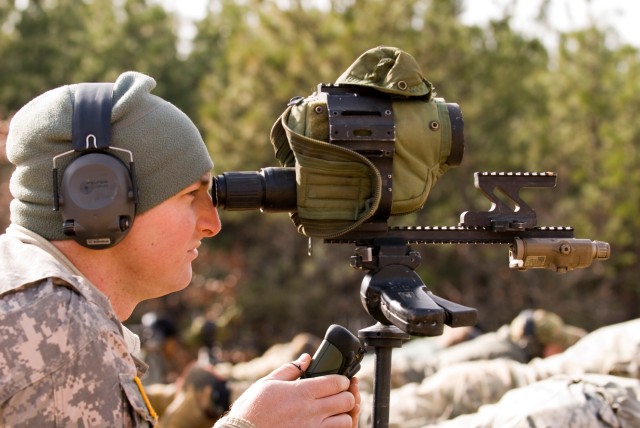ARLINGTON, Va. (Army News Service, Feb. 17, 2011) -- U.S. Army Special Operations Command has more than doubled its manpower since Sept. 11, 2001, and according to its deputy commander, mission requirements and operations tempo will continue on an upward glide path.
Maj. Gen. Kurt Fuller said special operations forces are presently working on 116 missions in 53 countries -- and "that's actually sort of low. It's usually somewhere between 60 and 65 countries, small numbers of people in most spots that total between 5,500 and 6,000 people."
Briefing members of the Association of the U.S. Army at its monthly Land Warfare Institute breakfast here, Feb. 15, Fuller added that with regard to fiscal realities, U.S. Army Special Operations Command, or USASOC, was better off than anticipated. He said the command would still find ways to creatively adjust and set priorities, but the investment would still need to be significant in order to maintain technological advantages over adversaries.
"In 2004 we were able to execute 61 percent of the missions we were asked to do," he said. "In 2010, we could only do 47 percent of what we were requested to do, and we believe we'll maintain about that 50-percent level out to around 2012, which is as far as we can really see. So optempo (operational tempo) is really a big issue for us."
Elaborating on deployment versus dwell time, Fuller said that while the Army was working hard to achieve a one-year to two-year ratio or better, he didn't see any USASOC elements getting to that level. Of six USASOC commands, the best dwell time ratio any has is one-to-one.
"We're also working to stand up a new active-duty civil affairs brigade that will be in direct support of our conventional brigade combat teams and divisions, and USASOC is now, for the first time part of ARFORGEN (Army Force Generation)," he added. He noted that in four years, USASOC had grown civil affairs to a brigade of five battalions and he expects that again to double by 2015.
With such rapid growth comes concern about the ability to grow enough noncommissioned officers to man the new formations. He also said he does not want to wreck existing units by pulling their noncommissioned officers to build new units.
Fuller also addressed Military Accessions Vital to the National Interest, commonly referred to as MAVNI. In short, MAVNI are foreign-born Soldiers the U.S. has brought into USASOC who already have the language, cultural and macro-regional expertise the command is looking for.
He said it was harder to teach American Soldiers cultural and language skills than it was to teach foreign-born Soldiers how to learn and handle new weaponry. Fuller noted that taking a foreign-born Soldier and turning him into a special operator was the way USASOC was heading.
USASOC also wants to institutionalize and make a permanent part of its formation the cultural support teams or female special ops engagement teams the Army placed in Afghanistan for various types of operational support.
The general said investing in talent management is a priority, and that USASOC was reworking all of its Special Operations Force career models and patterns to better emphasize joint and inter-agency skills. He said the staff had coordinated with the senior leader development office to identify key positions outside Special Operations Forces in the Defense Department, at Army headquarters, the combatant commands and inter-agency organizations where Special Operations Forces talent can be matched with requirements and demands.
Fuller capped his brief adding that USASOC was looking for a new light vehicle that can be transported by the CH-47 Chinook and is capable of maintaining low visibility and long-range infiltration.
Related Links:
White House to present Medal of Honor to family of Green Beret for heroism in Afghanistan


Social Sharing